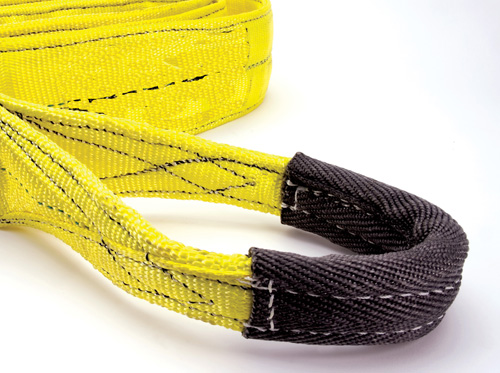Related: Lifting and Rigging Equipment & Web Sling Inspections
The best way to ensure web slings are safe to use is to ensure they have regular inspections, which is why you must follow the three stages of inspections to make ensure they are safe to use. These stages are called initial, periodic and frequent. All three of these levels of inspections must be completed by professional or qualified personnel to ensure the web sling is safe to use.
Initial Inspection:
Before you use a web sling it needs to be inspected by a qualified person. They will ensure the web sling was not damaged in transit and is the correct sling to use for the job. This will also be when the sling is first recorded within your service records; which then will help to ensure they will be properly maintained in the future.
Periodic Inspection:
To make sure there is no bias, these inspections should be completed by someone other than the person who completes the frequent inspections. The intervals between these inspections vary based upon the frequency of use, the severity of the service conditions, and the nature of the work being performed, BUT the time in-between these inspections CANNOT be greater than one year.
It is recommended basing the number of inspections you have on the type of service you place the web sling through; the following shows the different intervals for different usages.
Normal Service: Yearly
Severe Service: Monthly to Quarterly
Special Service: As often as recommended by a qualified inspector
It is important to maintain records of your inspections to ensure you know the condition of your web slings, and whether any need to be replaced or have any services completed on them.
Frequent Inspection:
These inspections should be completed daily or before each shift during normal service conditions, but during severe service conditions, they should be inspected before each use.
The sling should be thoroughly reviewed and removed from service if any damage is detected.
During these inspections you should keep an eye out for the following and if you notice anything remove the web sling from service immediately.
- The following markers are missing: trademark of the manufacturer, manufacturer’s code or stock number, rated load for one hitch type and the angle which it is based, the type of material used
- Acid or caustic burns
- Melting or charring
- Holes
- Tears
- Cuts
- Broken or worn stitching around the load-bearing splices
- Excessive abrasive wear
- Knots in the sling
- Any discoloration and brittle or stiff areas on part of the sling
- Any pitted, corroded, cracked, bent, twisted, gouged or broken fittings
Overall it is important to ensure that your web sling is in as best possible health before you use it or the thing you are lifting up just make come back down when you least expect. So ensure your web slings are safe to use by following the three stages of inspections (initial, frequent and periodic) and when their time comes to retire the web sling before it can become a safety hazard.
Have you ever used a web sling?
What would you recommend to people who have never used a web sling?
Comment Below!


